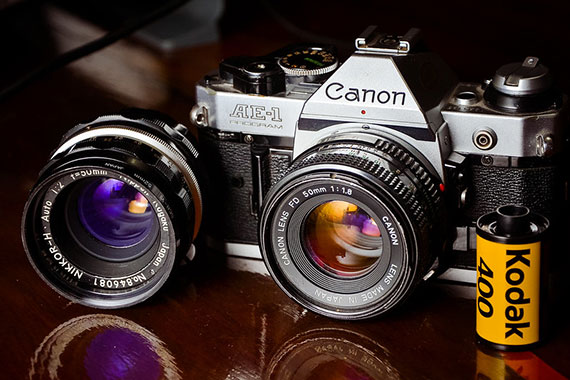There are useful checks you can make before you lay out your hard earned cash on a lemon, or to use on your own lens before shooting. Lens faults will degrade the image you are so carefully trying to make. No matter how much you spend on a camera, if the lens is deficient or inferior there is nothing you can do to rescue the shot once it is made. Eyeballing these pointers is a good way to keep the technical quality up.

Photo by Emilio Küffer; ISO 100, f/5.3, 1/80-second exposure.
Fingerprints are killers
Greasy finger marks contain acids which can make permanent etch marks on a lens if left there. They also degrade the contrast of the image, often as much as 25%. In the center they’re a real killer. Inspect your lenses frequently and clean them immediately you find one. Examine a used lens carefully for possible finger mark damage.
A microfiber cloth, the slightly shiny one, wiped gently in a circular motion, not rubbed, will usually remove the mark. If you have to go to a chemical based one, use an alcohol based lens cleaning fluid. Wipe very gently with a circular motion, and as little as possible.
Scratches
The effect of these depends where they are, and whether they are fine or coarse. Fine scratches, such as those caused by cleaning with unsuitable materials like the end of a shirt or whatever else is handy are usually the worst, because they scatter the light over the receptor. Contrast is reduced, and often the lens coating is destroyed. It is cheaper to buy a new lens than have the deficient one re-coated.
Deep scratches, especially near the middle of an element, would be too much of a problem. Leave the lens, or get a big discount. Often these marks are evidence of lens abuse, and may be an alert for other defects, such as out of alignment lens elements. One way to minimize this scratch is to use a fine permanent black ink marker and carefully fill the scratch, wiping off the excess. Black will reduce glare.
A scratch on the rear element is worse than one on the front, as the rear element directs the light straight onto the receptor. A front element imprint is modified by the rest of the elements before it leaves the lens barrel, and will be out of the depth of field anyway.
Dust
External dust can be removed with a soft lens brush. Be careful not to use a tissue or cloth which might cause the particles to mark the lens. I tend to avoid canned air as sometimes I’ve seen a sticky substance leave the can and plaster itself on the lens., making it far worse than before.
Internal dust usually come from flaked off black non-reflective coating that occupies the inside walls of the lens. Modern techniques avoid this, but it’s worth checking older lenses. As black doesn’t scatter light, it’s not really a problem unless there’s a lot of it.
Mould/fungus
Humid conditions can bring this on and it creates real problems. It spreads on elements in ever expanding threads which if not removed will etch patterns into the glass. Like fingerprints, it does major damage to contrast. The only cure is to have the lens disassembled by a repair specialist and cleaned. Left too late, forget the clean and buy a new lens. It’s cheaper.
Over-cleaning. Don’t.
Too much rubbing can remove the surface coatings which are there to prevent flare and ghosting. This can also cause flat spots in the carefully designed curvature of the lens, degrading refraction, focus and affecting blowups.
A good lens test is to take your camera, mount it on a firm support (read my tripod article), and photograph a page from a newspaper. Examine it carefully for any distortions or out of focus areas. This can tell you a lot about the lens without expensive testing equipment or charts. The best advice for lens care, don’t get it dirty. Always replace the lens cap when not shooting, and consider a UV filter as a protection in dusty, wet or windy conditions. A well cared for lens will give you great service for many years. Happy shooting.
About the Author
John Rundle is a professional photographer and recently retired head of photography at the Australian International College of Art. He teaches workshops on photographic topics in Australia and New Zealand. He is also active as a musician and musical director.
Like This Article?
Don't Miss The Next One!
Join over 100,000 photographers of all experience levels who receive our free photography tips and articles to stay current:






I always have UV filters on my lenses. They are much cheaper to replace and the good ones offer great light transmission and minimal effect on image quality